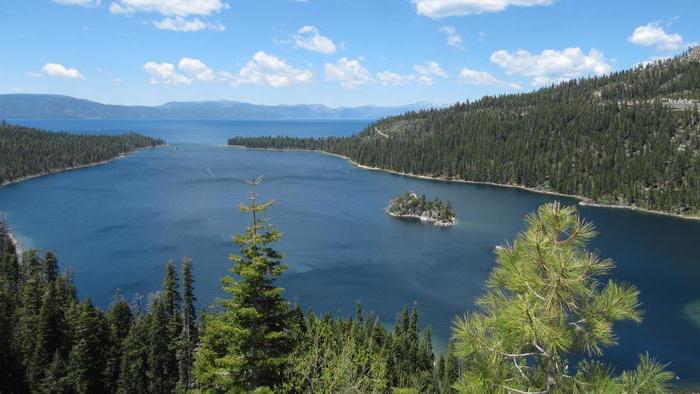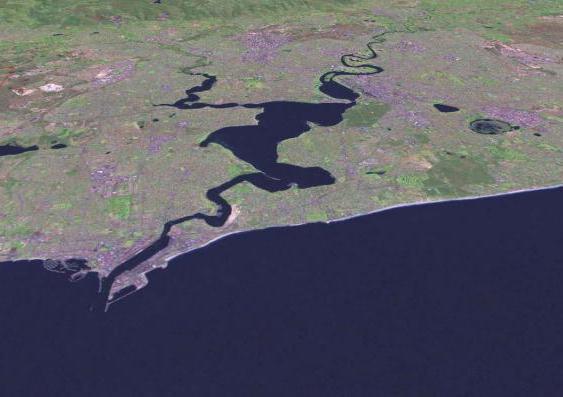The regime for the use of water bodies of the Russian Federation is established in industry regulations - in the RF VK, federal and regional laws. Legal relations arising in this area may also be regulated by presidential decrees. 
Earth Resources
Water bodies of the world occupy a vast territory of the planet. They include the seas and oceans, glaciers, snowfields, rivers, swamps, lakes. The most valuable are fresh water bodies of the world. There are few of them on the planet. In Russia, one of these fresh objects is Lake. Baikal. All aquatic resources of the Earth form the hydrosphere. Currently, there is no single approach to determining its boundaries. There are various opinions in the literature regarding the interpretation of the very concept of the hydrosphere. Traditionally, it is considered the water shell of the planet, located within the crust, including the seas and oceans, underground water bodies, snowfields, glaciers, rivers, lakes, swamps, ponds.
Hydrological cycle
All water bodies are directly or indirectly connected with each other. They are united by a global hydrological cycle. In simple words, it is called the water cycle. River runoff acts as its key element. It closes the links of the oceanic and continental cycles. The largest drain has r. Amazon. It is 7,280 km3/year. Over the past 50 years, the mass of water in the hydrosphere of the planet has remained largely unchanged. At the same time, the amount of content in some water areas changes. This is due to the constant redistribution of water in nature. The hydrosphere is particularly affected by global warming. It provokes the melting of glaciers, permafrost. Due to global warming, water levels in the oceans have risen significantly. 
Legal aspect
The use of water bodies of the planet is regulated by international law. They establish the rules of navigation, fishing, aircraft over water areas. International law establishes a category such as neutral waters. Within their limits, special provisions apply. Rules are established for all states and are binding.
Water bodies of the Russian Federation
Their classification is established depending on morphometric, physical-geographical and other features. Water bodies are divided into underground and surface. The latter include:
- Sea or their individual sections (bays, straits, estuaries, bays, and so on).
- Canals, streams, rivers and other watercourses.
- Ponds, lakes.
- Swamps.
- Reservoirs, flooded quarries.
- Snowfields, glaciers.
- Natural outlets of underground water (geysers, springs).
This category also includes land within the coastline. Groundwater bodies include groundwater basins and aquifers. 
Borders
Coastlines are defined for:
- Moray - relatively constant water level. In the case of its periodic change, the boundary is set according to the maximum low tide line.
- Reservoirs, ponds - relatively normal retaining water level.
- Marshes - along the border of peat deposits at zero depth.
Shorelines of underground facilities are established in accordance with subsoil legislation.
Public access
Municipal / state owned surface water bodies are publicly available. Every citizen has the right to satisfy their domestic and personal needs with their help for free.The Code and other federal laws may provide for specific rules. The use of water bodies is carried out in accordance with the standards of protecting the life of citizens. They are approved in the manner determined by the Government. In addition, the use of water bodies for domestic and personal needs is regulated by the rules established by local authorities. 
Limitations
Special rules may prohibit:
- Water withdrawal for household and drinking supplies.
- Bathing.
- Moving jet skis, small boats and other technical equipment used for recreation.
- Watering place.
In cases stipulated by federal and regional laws, other prohibitions may be established. Information on restrictions on the use of publicly accessible facilities is communicated to residents of the respective settlements by local authorities through the media. Along the coastlines, special warning and prohibition signs are also installed. Notification of the population can be carried out in other ways.
Coastline
Land strips limiting public water bodies have a width of 20 m. The exception is the coastline of canals, streams and rivers, the length of which is no more than 10 km. The width of the bounding strip of land in these cases is 5 m. The coastline of swamps, snowfields, geysers, glaciers, springs and other water bodies is not determined. Each citizen is granted the right of free access to the coastline. The population can use it without the use of mechanical vehicles for staying around them, moving, as well as for sports or recreational fishing, mooring boats. 
Property rights
Water bodies located on the territory of the Russian Federation belong to the state. Moreover, a number of exceptions are established in the legislation. Waterlogged quarries, ponds located within the area owned by the region of the Russian Federation, legal entity, citizen, municipality, belong to the corresponding entity. Other rules may be provided for in federal law. The right of ownership to the above objects of a citizen, region, municipality, organization terminates at the same time as the alienation of the respective site within which they are located. In this case, the norms of the Civil and Land Codes apply. It is not allowed to alienate water bodies without taking the land within which they are located. Such sections are not subject to division, if this requires the division of a quarry or pond. With a natural change in the river bed, the ownership of the Russian Federation on it does not stop.
The main uses of water bodies
Water areas can be provided to satisfy several or one goal, one or more entities. Water bodies can be operated for:
- Drinking and household supplies.
- Treatment and recovery.
- Recreation.

In water areas, energy facilities and infrastructure can be installed. The implementation of fisheries is regulated by the VK of the Russian Federation (Article 51). The use of water bodies does not stop with a natural change in the riverbed, unless otherwise follows from the content of the legal relationship or from the provisions of the VC. Rights are acquired by organizations and citizens in the manner prescribed by the Code, as well as legislation on subsoil. The latter applies to underground facilities.
Termination of Rights
It is carried out in accordance with the provisions of the VC and subsoil legislation. Forced termination of rights is allowed on the following grounds:
- Inappropriate use of the object.
- Operation in violation of Russian law.
- Non-use of the facility within the time period stipulated by the decision on its provision or by the water use agreement.
Forced termination of rights if it is necessary to exploit water areas for municipal or state needs is carried out by executive authorities of the federal or territorial level within their competence and in accordance with legislative provisions.
Contract
In accordance with the announcement, one party - the state or municipal institute of power - undertakes to provide the entity with a water body for use on a reimbursable basis. The lease rules established in the Civil Code of the Russian Federation apply to the contract, unless otherwise provided by the VC and does not contradict the content of the legal relationship. The agreement is considered concluded from the date of its registration in the registry. 
Content of the contract
The agreement must contain data on:
- The facility. Among other things, its borders, parts, within which the relevant activities will be carried out, should be described.
- Types, purposes, conditions of use of the object or its zone. Here, including, indicates the amount of permitted resource withdrawal.
- The validity period of the contract.
- The amount of payment for the use of the facility or its part, the terms and conditions for making the agreed amounts.
- The termination of rights.
- Responsibility of the parties for violation of the terms of the agreement.
Conclusion
Water resources are an invaluable wealth of each country individually and the entire planet as a whole. The norms of international and domestic law establish the procedure and conditions for their operation. The key task of the government of any country is to ensure the preservation of resources in good condition. To do this, laws are passed restricting the free use of facilities, prohibiting the conduct of harmful activities near them. Currently, the most urgent has become the problem of discharge of effluents into water bodies. To solve it, laws were passed at the state level that stipulate the responsibility of entities that negatively affect the environment. Today, industrial enterprises are obliged to install treatment facilities and deduct environmental charges. In addition, the law provides for fines for entities that systematically violate the rules for using water bodies.



